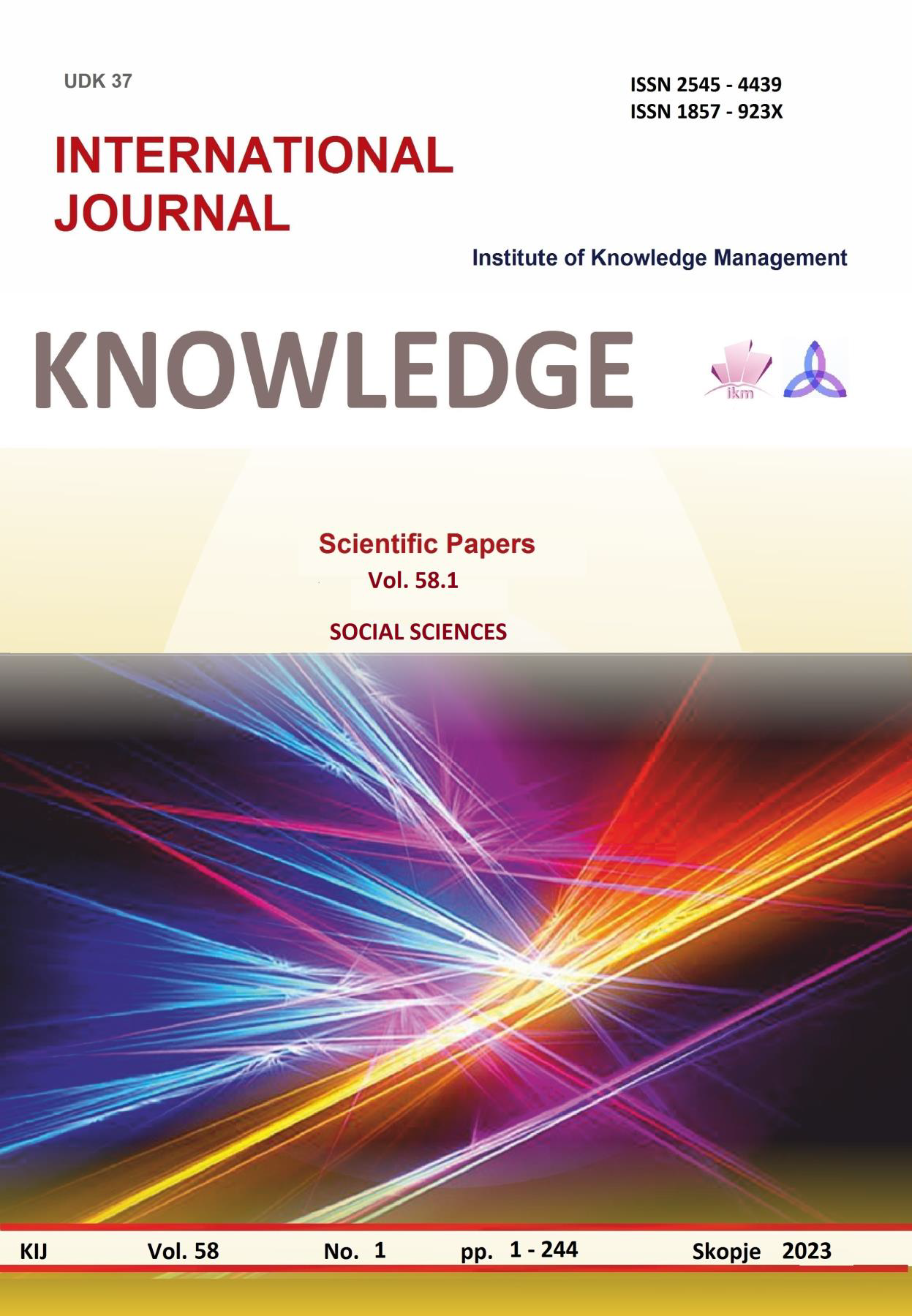FINANCING AND CAPITAL STRUCTURE
DOI:
https://doi.org/10.35120/kij5801087mKeywords:
capital structure, debt financing, financeAbstract
The capital structure denotes the composite blend of debt and equity utilized by a business entity.
In the past, the concept of capital structure was commonly categorized as a highly specialized and technical aspect of corporate management that pertained to a limited number of individuals within an organization.
In the perspective of a conventional business individual, the likelihood of this vicinity to produce ample profits was rather low.
The generation of considerable revenue is observed to be comparatively pronounced in certain financial domains, such as appropriately identified investment initiatives, when juxtaposed with other areas of financial pursuits.
In recent times, there has been a substantial transformation in the prevailing circumstance.
The area of capital structure has garnered significant attention and interest within academic discourse.
The present discourse concerns both the theoretical and practical aspects of finance.
The utilization of said funds may be extended towards facilitating the comprehensive functioning of the enterprise and executing investment operations. The various forms of capital structure commonly recognized include equity share capital, debt financing, preference share capital, and vendor financing.
The present study aims to examine various aspects related to capital structure, including the challenges associated with the precise measurement of capital structure. Additionally, individual authors suggest that there exist numerous intriguing areas for future exploration in this domain.
Anticipated outcomes encompass factors such as the provision of capital from the supply side, the correlations between capital structure and labor agreements, financial contracting, the dynamic trade-off theory, and the rate of capital structure adjustments. The aforementioned concepts will be subjected to scrutiny to evaluate their potential applicability as findings for research purposes.
Some emphasis is also placed on the issue of asymmetric information and moral hazard that may arise between the parties involved in a given scenario
The role of investors and issuers of diverse securities is fundamental in the financial domain.
In the following, we also examine the three fundamental principles underlying the concept of capital structure in the realm of finance. The concept of capital structure irrelevance, the significance of the debt tax shield, and the interrelationship between the financing decisions and firm value represent essential themes in the field of finance.
Attention is also focused on the expected financial costs associated with insolvency and their impact on determining the optimal capital structure.
These ideas try to figure out if a firm can make more money by changing how it gets its money. Each idea has a unique answer, which means capital structure is a complex but interesting subject.
References
Al-Afifi, A. A. M. (2020) .Factors Affecting Decision Makers Preference of MSMEs in Financing Sources Choice The International Journal of Business Ethics and Governance (IJBEG), Vol. 2, No. 1.Retrieved from: https://www.academia.edu/download/65219199/31_Article_Text_185_2_10_20201207.pdf
Anton, M. (2016).Capital Structure in the Modern World. Palgrave Macmillan: Springer International Publishing AG Switzerland
Belás, P., Gavurová, J., & Tóth, B. (2018). Impact of selected characteristics of SMEs on the capital structure. Journal of Business Economics and Management. 2018, vol. 19, issue 4, p. 592-608 Retrieved from: https://publikace.k.utb.cz/handle/10563/1008416
Energy Catalyst Investment Guide (June, 2020) .Debt Financing, Retrieved from: https://www.google.com/url?sa=t&rct=j&q=&esrc=s&source=web&cd=&ved=2ahUKEwjk-JjFuoT_AhX6SvEDHcEfArIQFnoECCUQAQ&url=https%3A%2F%2Fenergycatalyst.community%2Fdeveloper%2Fwp-content%2Fuploads%2F2020%2F12%2FInvestment-Guides-Debt-financing.pdf&usg=AOvVaw1LT9yGFc97GoaQRovPEcX9
Frank, J. F. P., & Drake, P. (2009).Capital Markets, Financial Management, and Investment Management. New Jersey:John Wiley & Sons, Inc Hoboken.
Lim, S.C., Macias, A.J., & Moeller, T. (2020). Intangible assets and capital structure , Journal of Banking & Finance ,Volume 118 .Retrieved from: https://doi.org/10.1016/j.jbankfin.2020.105873
McLane, E. (2017). Business Finance Pearson, Harlow, England,
Morgan, J.P. (2017). Rethinking capital structure today. Retrieved from: https://www.google.com/url?sa=t&rct=j&q=&esrc=s&source=web&cd=&ved=2ahUKEwiKsJ-mvIT_AhUaRPEDHX1QB8cQFnoECAkQAQ&url=https%3A%2F%2Fwww.jpmorgan.com%2Fcontent%2Fdam%2Fjpm%2Fcorporate%2Finvestment-bank%2Fcfa%2Fpub%2FRethinking_capital_structure_today.pdf&usg=AOvVaw3SPU9dRMvqogmqMXXN73P0
Neville, C., & Lucey, B.M. (2022). Financing Irish high-tech SMEs: The analysis of capital structure. International Review of Financial Analysis Volume 83, 102219Retrieved from:https://www.sciencedirect.com/science/article/pii/S1057521922001806
Peterson, P., Drake, F., & Fabozzi, J. (2010).The Basics of Finance: An Introduction to Financial Markets, Business Finance, and Portfolio Management John Wiley & Sons.
Pinto, J.M.(n.d). DEBT FINANCING CHOICES: THEORY AND EVIDENCE FROM EUROPE Retrieved from :https://www.google.com/url?sa=t&rct=j&q=&esrc=s&source=web&cd=&ved=2ahUKEwjk-JjFuoT_AhX6SvEDHcEfArIQFnoECCIQAQ&url=https%3A%2F%2Fciencia.ucp.pt%2Ffiles%2F39192775%2F39103494.pdf&usg=AOvVaw0p9gIuvoD37vsI0I43txlB
Wang, Z., & Huang, Y. (2021). The Analysis of Capital Structure Based on Two Hypothetical Firms Advances in Economics, Business and Management Research, volume 203 Retrieved from: https://www.google.com/url?sa=t&rct=j&q=&esrc=s&source=web&cd=&cad=rja&uact=8&ved=2ahUKEwiKsJ-mvIT_AhUaRPEDHX1QB8cQFnoECCcQAQ&url=https%3A%2F%2Fwww.atlantis-press.com%2Farticle%2F125965956.pdf&usg=AOvVaw2yCCELikUBOQDlUdUB7JWm





